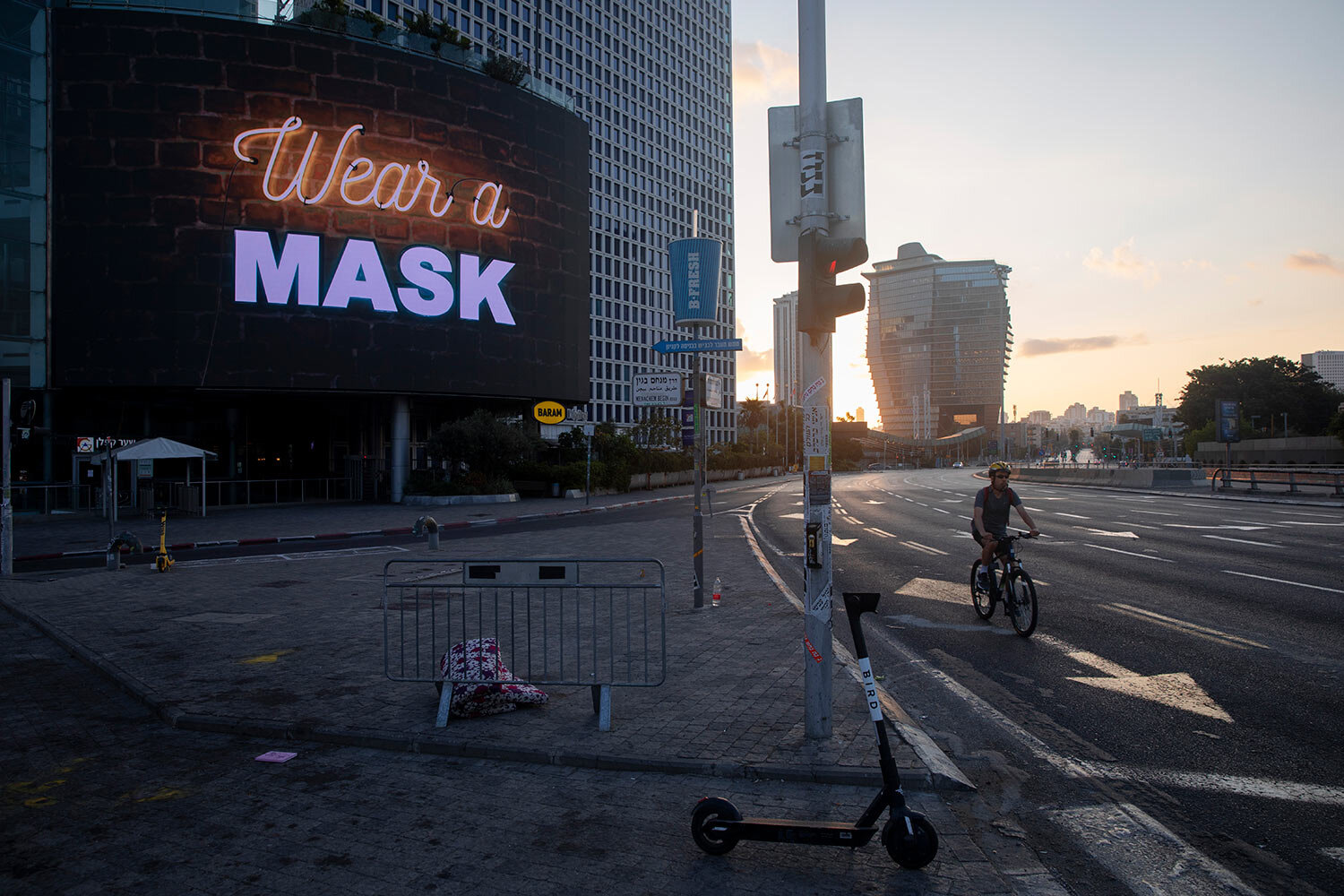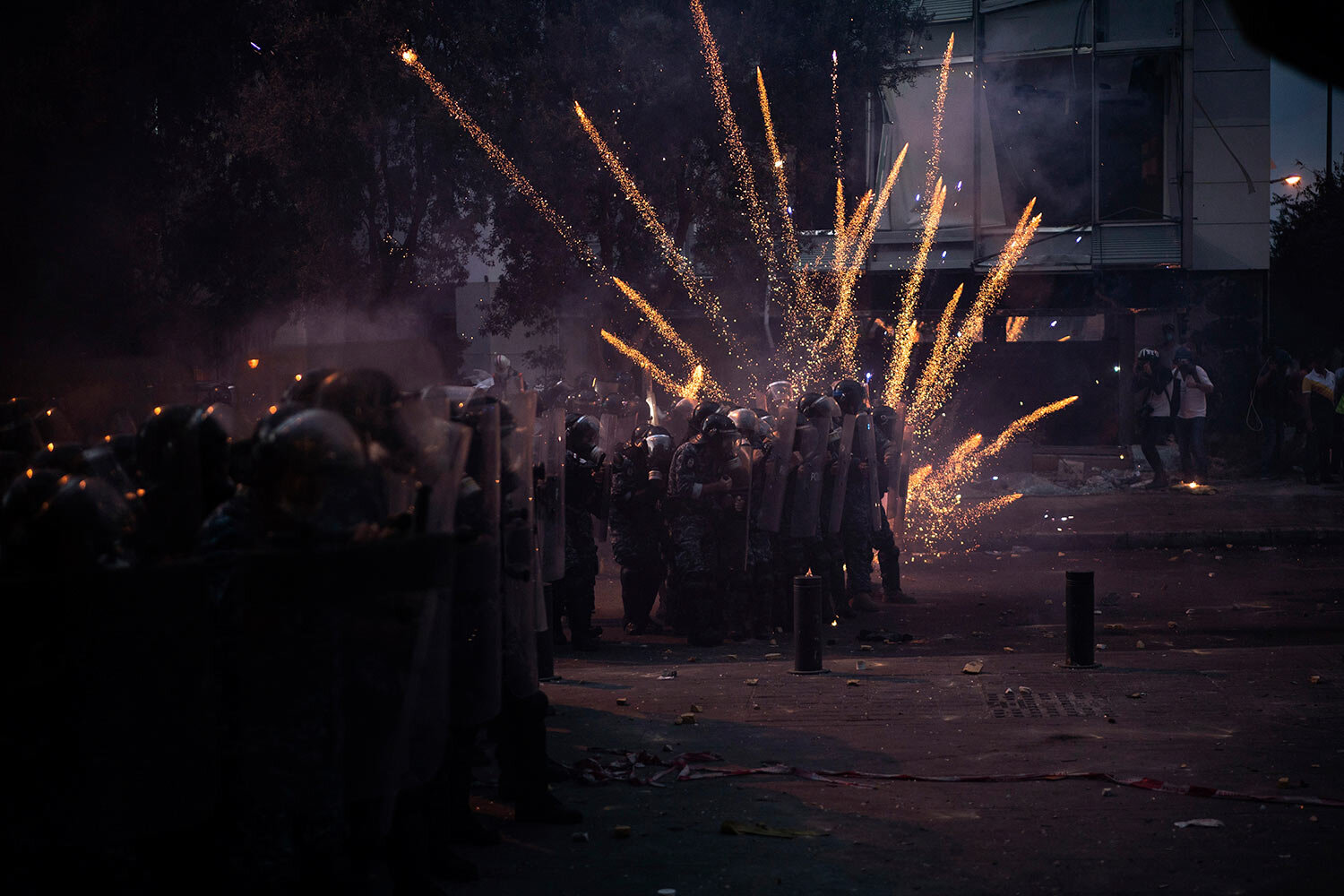Beirut blast led litany of Mideast crises in 2020

As countries across the Middle East grappled with the coronavirus pandemic, many also had to contend with long-running conflicts, economic crises and mass protests in another chaotic year for the volatile region.
The most devastating single event in the region was neither war-related, nor a claimed terrorist attack, but an explosion in Beirut’s port caused by the detonation of a stockpile of explosive chemicals that had been improperly stored there for years.
The Aug. 4 explosion killed more than 200 people, injured thousands and destroyed entire neighborhoods of the capital. Associated Press photographer Hassan Ammar captured the catastrophic aftermath in an instantly iconic photo of a man carrying his 11-year-old niece through the smoking ruins.
He and other AP photographers covered the year of upheaval. It began with fears of war after the U.S. killed Iran's top general and was dominated by a pandemic that had no interest in the region’s bitter divisions and stubborn conflicts.
Hoda Kinno, 11, is evacuated by her uncle Mustafa, in the aftermath of a massive explosion at the port in Beirut, Lebanon, Aug. 4, 2020. (AP Photo/Hassan Ammar)
Smoke rises after an explosion that hit the seaport of Beirut, Lebanon, the day before, Aug. 5, 2020. (AP Photo/Hussein Malla)
Injured people are evacuated by a military truck from a massive explosion in Beirut, Lebanon, Tuesday, Aug. 4, 2020. (AP Photo/Hassan Ammar)
Civilians help to evacuate an injured sailor from a ship which dock near the explosion scene that hit the seaport of Beirut, Lebanon, Tuesday, Aug. 4, 2020. (AP Photo/Hussein Malla)
Israelis and Arabs, Sunnis and Shiites, wealthy Gulf monarchies and war-ravaged countries alike saw widespread lockdowns, overwhelmed ICUs and the hasty construction of field hospitals as the pandemic easily slipped across heavily-guarded frontiers. The pandemic brought new horrors to Syria and Yemen, which are still mired in civil war.
Holy sites sacred to Muslims, Christians and Jews emptied out, in scenes of desolation last seen in the Middle Ages. Pilgrimages — including the annual hajj to Mecca and Medina — were cancelled or drastically scaled down. Jerusalem's Old City was empty over Easter, and Christmas celebrations were mostly cancelled in the biblical town of Bethlehem.
The region's worst outbreak was in Iran, which was already reeling from months of escalation with the United States following President Donald Trump's withdrawal from the 2015 nuclear deal and his imposition of crippling sanctions. In January, a U.S. drone strike killed Gen. Qassim Soleimani, the architect of Iran's regional military activities, near Baghdad's international airport.
AP photos captured the national outpouring of grief, as hundreds of thousands of Iranians flooded the streets during mass funeral services. Iran retaliated with a missile attack on U.S. bases in Iraq.
A member of the Shiite Imam Ali brigades militia prays by a body of a coronavirus victim during a funeral at the new Wadi al-Salam cemetery near Najaf, Iraq, Monday, July 20, 2020. (AP Photo/Anmar Khalil)
An Iranian cemetery worker prepares new graces at the Behesht-e-Zahra cemetery just outside Tehran, Iran, Sunday, Nov. 1, 2020. (AP Photo/Ebrahim Noroozi)
Men, on right, and women on left, mourn during an annual ceremony commemorating Ashoura, the anniversary of the 7th century death of Imam Hussein, a grandson of Prophet Muhammad, and one of Shiite Islam's most beloved saints, who was killed in a battle in Karbala in present-day Iraq, at the courtyard of the Saint Abdulazim shrine in Shahr-e-Ray, south of Tehran, Iran, Sunday, Aug. 30, 2020. (AP Photo/Vahid Salemi)
Women clerics wearing protective clothing and "chador," a head-to-toe garment, arrive at a cemetery to prepare the body of a person who died from COVID-19 for a funeral, in Ghaemshahr, Iran, on April 30, 2020. (AP Photo/Ebrahim Noroozi)
Volunteers wearing protective clothing prepare the body of a man who died from COVID-19 for a funeral at a cemetery in the outskirts of the city of Ghaemshahr, in northern Iran, Wednesday, Dec. 16, 2020. (AP Photo/Ebrahim Noroozi)
People wearing protective clothing attend the funeral of a victim who died from the coronavirus, at a cemetery in the outskirts of the city of Ghaemshahr in north of Iran, Friday, May 1, 2020. (AP Photo/Ebrahim Noroozi)
In Israel, protesters held the largest anti-government demonstrations in years, demanding that Prime Minister Benjamin Netanyahu resign over his trial on corruption charges and his government's handling of the pandemic. In one photo, a protester can be seen kneeling in the street with an Israeli flag, drenched by a police water cannon.
Protests also continued in Iraq and Lebanon, which was already facing an economic meltdown even before the explosion. In both countries, the demonstrators took aim at an entrenched political elite blamed for years of corruption and economic mismanagement. In the occupied West Bank, Palestinians demonstrated against Israeli land seizures.
In Afghanistan, militants stormed a maternity hospital in May, killing at least 24 people, including mothers, nurses and two babies. The horrific attack highlighted the lingering unrest despite a peace agreement reached in February between the U.S. and the Taliban, which condemned the hospital attack and denied any involvement.
Text from AP News story, AP PHOTOS: Beirut blast led litany of Mideast crises in 2020, by Joseph Krauss











































